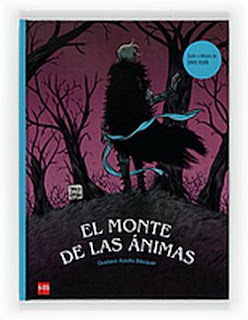MERRY CHRISTMAS FROM MR SCROOGE!
A Christmas
Carol is undoubtedly the most beloved story set during this festive season. Published
on 19 December 1883, the first edition sold out by Christmas Eve, and this novella
is considered a true classic. The book recounts the story of Ebenezer Scrooge,
an elderly miser who is visited by the ghost of his former business partner
Jacob Marley and the spirits of Christmas Past, Present and Yet to Come. After
these visits, Scrooge is transformed into a gentler man, treating everyone with
kindness, generosity and compassion.
However,
the truth is that, in spite of the literary value and importance of this very
work, its greater significance lies on the social influence it exerted. Two
hundred years ago, Christmas celebrations were completely different and the
modern observance we hold nowadays is largely the result of a mid-Victorian
revival of the holiday. This re‑evaluation of the tradition resulted in the
widespread presence of carols and even newer traditions. For example, the
Christmas tree had been introduced in Britain during the 18th century,
and its use was popularised by Queen Victoria and Prince Albert, a practice that
was copied in many homes across the country and, later on, internationally.
Funnily
enough, even though the phrase ‘Merry Christmas’ had been around for many
years, it was Charles Dickens’s use that popularised it among the public. Also, the
exclamation ‘Bah! Humbug!’ entered popular use in the English language as
a retort to anything sentimental or overly festive, Scrooge’s reaction to
anything Christmassy. What is true is that, for all the curiosities behind its creation and adaptations (see the trailer below for the latest one),
in the words of G. K. Chesterton, ‘the beauty and blessing of the story lie
in the great furnace of real happiness that glows through Scrooge and
everything around him. Whether the Christmas visions would or would not convert
Scrooge, they convert us.’
Un conto de Nadal é sen dúbida a narración predilecta durante esta
época festiva. Publicada o 19 de decembro de 1843, a primeira edición xa se
tiña esgotado en Noiteboa. O libro relata a historia de Ebenezer Scrooge, un
vello avarento ao que visita a pantasma do seu antigo socio Jacob Marley e os
espíritos do Nadal Pasado, Presente e Futuro. Despois destas aparicións,
Scrooge transformarase nunha persoa máis amábel, tratando a todo o mundo con
xenerosidade e compaixón.
A pesar do significado e valor literario deste traballo, a súa verdadeira
importancia fíxose notar na súa repercusión social. Hai douscentos anos, as
celebracións natalicias eran completamente diferentes e o seu
tratamento moderno é en grande parte un resultado da súa popularización na
metade da época Vitoriana. Esta reavaliación de costumes levou consigo a
ubicuidade das panxoliñas e novas tradicións. Por exemplo, a árbore de Nadal
foi introducido en Gran Bretaña durante o século XVIII e o seu uso foi
popularizado pola Raíña Vitoria e o Príncipe Alberto, unha práctica que moitos
fogares copiaron no país e, posteriormente, no estranxeiro.
Curiosamente, a
pesar de que a frase «Merry Christmas» xa existía como tal, foi o uso que lle
deu Dickens a que a popularizou entre o público. Ademais, a exclamación « Bah! Humbug!» entrou no vocabulario xeral en inglés como
resposta a calquer cousa demasiado sentimental ou festiva, gracias a que é a
expresión coa que Scrooge reacciona a calquera cousa que cheire ao Nadal. O
certo é que, aínda tendo en conta todas as curiosidades que rodean a creación
da obra e as súas adaptacións (o caso do tráiler que se inclúe nesta entrada), nas palabras de G. K. Chesterton, «a beleza e a beizón da historia están
nese forno de ledicia que reloce a través de Scrooge e todo o que o envolve... Se
as visións do Nadal cambiaron a Scrooge ou non, múdannos a nós.»








Comentarios
Publicar un comentario